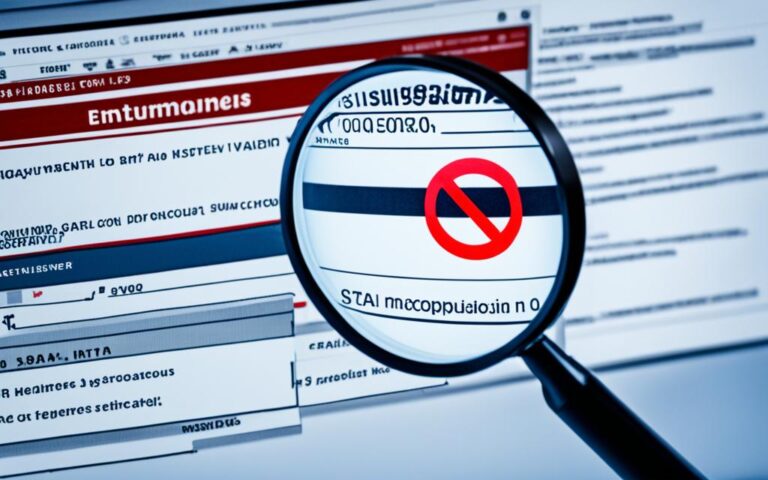Secure Data Purge: A Step Towards Enhanced Data Privacy
In today’s digital landscape, data privacy is of paramount importance. With the increasing amount of data collected by organizations, ensuring its secure management has become a significant challenge. This is where secure data purge comes into play. By implementing a comprehensive data deletion program, businesses can not only protect sensitive information but also enhance their data privacy practices.
A secure data purge involves permanently deleting data from databases and storage devices, ensuring that it cannot be accessed or recovered. This process enables organizations to minimize the risk of data breaches and comply with data protection regulations. By removing outdated and unnecessary data, businesses can reduce their exposure to potential security threats.
Enhancing data privacy goes hand in hand with improving data governance. Organizations need to have a clear understanding of the types of data they store, where it is located, and who has access to it. By conducting a thorough system and data mapping, businesses can identify areas where data deletion is required and implement the necessary measures.
Implementing a sustainable data deletion program also allows organizations to meet regulatory requirements. With the introduction of data privacy laws such as the General Data Protection Regulation (GDPR), businesses are obligated to handle personal data responsibly. By incorporating secure data purge practices, organizations can ensure compliance and avoid costly fines.
Furthermore, a secure data purge contributes to data hygiene. Having a clean and accurate database is essential for effective customer relationship management and targeted marketing campaigns. By purging outdated and inaccurate data, businesses can maintain a reliable and up-to-date view of their customers.
With the increasing attention on data privacy and protection, implementing a secure data purge is not just a best practice—it’s a necessary step for organizations to safeguard sensitive information and maintain customer trust. By prioritizing the deletion of unnecessary data, businesses can enhance their data privacy practices and strengthen their overall data governance framework.
The Benefits of Secure Data Purge
Secure data purge offers several benefits for organizations.
Firstly, it helps organizations adhere to data protection regulations by effectively protecting sensitive data. This includes complying with rights such as the right to erasure, processing data based on lawful basis, data minimization, and storage limitation.
Secondly, data purging helps organizations maintain a clean and accurate database, which is crucial for B2B organizations that store customer and contact data. Purging outdated and inaccurate data improves data quality and reduces the risk of contacting the wrong individuals.
Additionally, data purging allows organizations to focus on the data that matters most, avoiding distractions from extraneous and unnecessary data. It also helps reduce the cost of cloud storage by freeing up space and optimizing storage resources.
Lastly, data purging enables organizations to sync trusted data between applications, leading to enriched insights and a seamless customer experience.
Benefits of Secure Data Purge:
- Adherence to data protection regulations
- Maintaining a clean and accurate database
- Reducing the cost of cloud storage
- Enabling data synchronization between applications
Understanding Data Purging: Definitions and Differences
To fully understand data purging, it is important to distinguish it from data deletion and data archiving. Data purging involves permanently deleting data from a database, while data deletion can be a temporary measure that allows data to be retrieved after deletion. On the other hand, data archiving is the process of moving data to a separate storage device for long-term retention, typically for future reference or regulatory compliance. Data purging is a crucial part of data lifecycle management, ensuring that outdated and unnecessary data is removed to maintain data accuracy, compliance, and security.
How to Purge Data: Best Practices and Steps
Purging data is a critical process that requires careful planning and adherence to best practices to ensure the successful removal of unnecessary and outdated information from your database. By following these steps, you can effectively manage data purging and improve data quality.
Choose the Right Data Purging Tool
When starting the data purging process, it is essential to select a reliable and efficient data purging tool that can streamline the process and reduce errors. The right tool will help you automate the purging process, saving time and ensuring accuracy. Consider tools that offer features such as data analysis, duplicate detection, and scheduled purging to simplify the process.
Determine Which Data to Purge
One of the key steps in data purging is identifying the data to be purged. Focus on eliminating inaccurate, incomplete, duplicated, outdated, and unnecessary data that no longer serves any purpose. Conduct a thorough analysis of your database to identify the data that needs to be removed, taking into account data retention policies and compliance requirements.
Purge the Data
Once you have identified the data to be purged, you can proceed with the actual purging process. Depending on your chosen data purging tool, you can either automate the purge or manually delete the identified data. It is crucial to review and verify the data before purging it to avoid any unintended loss of valuable information. Ensure that you have proper backups and safeguards in place to avoid any irreversible consequences.
Automate Future Purges
Data purging should not be a one-time activity, but rather an ongoing process to maintain data hygiene. Automating future purges can help you ensure regular data cleansing, reducing the accumulation of unnecessary data over time. Set up scheduled purges based on your data retention policies and business requirements to maintain a clean and accurate database.
Follow Best Practices for Data Purging
Adhering to data purging best practices can further enhance the effectiveness of your data purging efforts:
- Prepare your data before purging by conducting a thorough analysis and ensuring data integrity.
- Establish a retention period for each type of data to determine when it should be purged.
- Consider alternatives such as data archiving for data that needs to be retained for legal or historical purposes.
By following these best practices, you can ensure that your data purging process is systematic, efficient, and compliant with regulatory requirements.
Data Purging Best Practices
| Best Practice | Description |
|---|---|
| Choose the Right Data Purging Tool | Select a reliable tool that streamlines the process and reduces errors. |
| Determine Which Data to Purge | Identify inaccurate, incomplete, duplicated, outdated, and unnecessary data. |
| Purge the Data | Delete the identified data using a tool or manual method. |
| Automate Future Purges | Set up scheduled purges to maintain data hygiene. |
| Follow Best Practices | Prepare data, establish retention periods, and consider data archiving. |
By applying these best practices and following the outlined steps, your organization can effectively manage data purging and maintain a clean and accurate database.
Key Management and Secure Data Purge
When it comes to secure data purge, effective key management plays a critical role in ensuring the confidentiality and integrity of sensitive information. Organizations need a reliable solution to safeguard cryptographic keys and secrets used in data deletion processes. Azure Key Vault is a recommended tool that provides a secure and scalable environment for managing keys and access permissions.
Azure Key Vault allows organizations to maintain granular control over their keys, granting access to users, groups, and applications at specific scopes. By utilizing Azure RBAC predefined roles, organizations can enforce strong access controls and limit potential vulnerabilities. With access control configured through the management plane and data plane, organizations can grant data plane access without compromising management plane security.
In addition to key management, Azure Key Vault also supports the storage of certificates, further enhancing data security. Storing certificates in the Key Vault provides an added layer of protection against unauthorized access and ensures the integrity of digital identities within an organization.
Moreover, it is crucial to establish robust recovery mechanisms for deleted key vaults or objects. Accidental deletions or malicious activities can pose significant risks to an organization’s data. By ensuring the ability to recover deleted key vaults or objects, organizations can quickly restore access and maintain the security and availability of critical resources.
“Effective key management is essential for secure data purge. Azure Key Vault offers a comprehensive solution to protect cryptographic keys and secrets, enabling organizations to maintain control over their data deletion processes.”
By leveraging Azure Key Vault for key management, organizations can enhance the security of their data purge operations and ensure compliance with regulatory requirements. The seamless integration of key management with secure data purge practices enables organizations to protect sensitive data throughout its lifecycle, providing peace of mind and reinforcing data privacy and security initiatives.
Key Benefits of Azure Key Vault for Secure Data Purge:
- Safeguard cryptographic keys and secrets used in data deletion processes
- Granular access control through Azure RBAC predefined roles
- Secure storage of certificates for enhanced data security
- Robust recovery mechanisms for deleted key vaults or objects
Implementing robust key management practices, in conjunction with secure data purge methodologies, empowers organizations to proactively protect their data and maintain compliance with industry regulations.
| Key Management and Secure Data Purge | Azure Key Vault |
|---|---|
| Securely manage cryptographic keys and secrets | ✓ |
| Granular access control for users, groups, and applications | ✓ |
| Secure storage of certificates | ✓ |
| Robust recovery mechanisms | ✓ |
Protecting Data in Transit and at Rest
Protecting data in transit and at rest is crucial for ensuring data security. Data encryption plays a vital role in safeguarding sensitive information from unauthorized access. Let’s explore best practices for data protection at rest and in transit.
Data Encryption at Rest
Data encryption at rest involves protecting data stored on physical media, such as magnetic or optical disks. By applying disk encryption to both operating system (OS) and data disks, organizations can ensure that data remains secure even if the physical storage media falls into the wrong hands. One effective tool for disk encryption is Azure Disk Encryption, which strengthens data protection by encrypting the entire disk at the hardware level. By implementing disk encryption, organizations can mitigate the risk of data breaches and comply with data protection regulations.
Data Protection in Transit
Data protection in transit focuses on securing data while it is being transferred between components, locations, or programs. This is particularly important when data is traversing networks, passing through various systems and potentially vulnerable to interception. SSL/TLS protocols are widely used to encrypt data in transit, ensuring that it remains confidential and cannot be intercepted or tampered with. Azure VPN Gateway is an effective solution for securing access from multiple workstations or individual workstations to Azure virtual networks. By establishing secure communication channels, such as HTTPS and VPN, organizations can protect sensitive data during transit and minimize the risk of unauthorized access.
Implementing data encryption at rest and in transit is a critical step towards enhancing data security and maintaining compliance with data protection regulations. By utilizing tools like Azure Disk Encryption and following best practices for secure communication, organizations can effectively mitigate the risk of data breaches and safeguard sensitive information.
Summary
“Data encryption at rest and in transit is crucial for ensuring the security and confidentiality of sensitive information. By applying disk encryption to physical storage media and utilizing secure communication protocols, organizations can protect data from unauthorized access and reduce the risk of data breaches.”
| Data Protection | Data Encryption at Rest | Data Protection in Transit |
|---|---|---|
| Description | Safeguarding data stored on physical media | Securing data during transmission |
| Best Practices | Apply disk encryption using tools like Azure Disk Encryption | Use SSL/TLS protocols for secure communication, utilize Azure VPN Gateway |
| Benefits | Protection against unauthorized access to physical storage media | Confidentiality and integrity of data during transfer |
Conclusion
Secure data purge plays a vital role in enhancing data privacy and protection for organizations. By implementing a sustainable data deletion program and following best practices, businesses can minimize data collection and meet regulatory requirements, improving data hygiene. Secure data purge offers numerous benefits, including effective protection of sensitive information, the development of a more accurate view of customer contacts, and the ability to focus on valuable data.
In addition to these advantages, secure data purge also helps reduce storage costs by eliminating unnecessary data and enables organizations to derive enriched insights by syncing trusted data across applications. Key management, along with the protection of data in transit and at rest, are essential practices for ensuring data security throughout the purge process. By prioritizing secure data purge, organizations can enhance their data privacy practices and mitigate the risks associated with unauthorized data access.
In conclusion, secure data purge not only safeguards data privacy but also demonstrates a commitment to best practices and compliance. By responsibly managing data deletion, organizations can build trust with customers and stakeholders while maintaining a robust data protection framework. Embracing secure data purge as a standard practice is an essential step towards establishing a secure and privacy-centric environment.
FAQ
What is data purging?
Data purging is the process of permanently deleting data from a database, ensuring that outdated and unnecessary data is removed to maintain data accuracy, compliance, and security.
What is the difference between data purging and data deletion?
While data purging permanently deletes data from a database, data deletion can be a temporary measure that allows data to be retrieved after deletion.
What is data archiving?
Data archiving is the process of moving data to a separate storage device for long-term retention, typically for future reference or regulatory compliance.
Why is secure data purge important?
Secure data purge is important because it helps organizations adhere to data protection regulations, maintain a clean and accurate database, reduce storage costs, and enhance data privacy and security.
What are the benefits of secure data purge?
The benefits of secure data purge include effective protection of sensitive data, maintaining a clean and accurate database, focusing on valuable data, reducing storage costs, and enabling synced data for enriched insights.
How can organizations ensure secure data purge?
Organizations can ensure secure data purge by following best practices such as choosing a data purging tool, determining which data to purge, automating future purges, and considering alternatives like data archiving.
What is key management in the context of secure data purge?
Key management refers to the process of safeguarding cryptographic keys and secrets used in data deletion processes. It involves using solutions like Azure Key Vault to maintain control of keys, access permissions, and data security.
How can organizations protect data in transit and at rest?
Organizations can protect data in transit by using SSL/TLS protocols for encryption during data transfer. Data at rest can be protected by applying disk encryption to OS and data disks using tools like Azure Disk Encryption.















